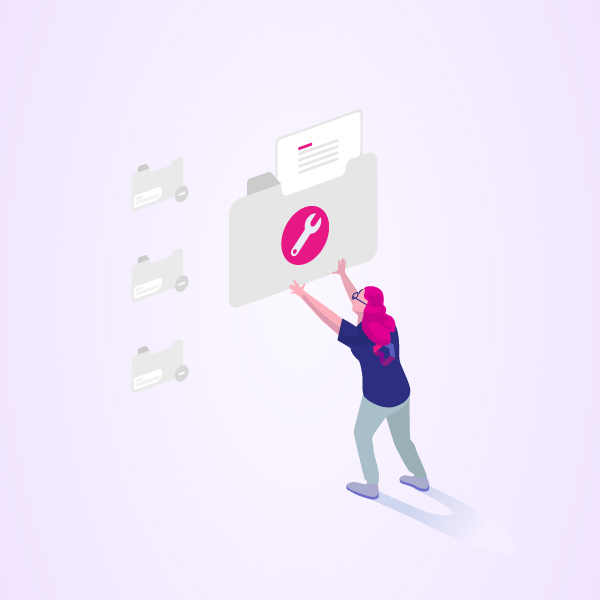
A disaster recovery plan is critical for software. It ensures business continuity. The business continuity is a plan describing the process to follow in case of a disaster in any company's software stack. This plan guarantees the correct system functioning, therefore, avoids economic losses. Here we will tell you what's the Atlassian disaster recovery plan.
The Atlassian tools guarantee the availability of the main instances even when those become unavailable. The Data Center deployment option includes a cold standby strategy configuration that allows it. A failover strategy and disaster recovery planning are fundamental to achieving high availability of systems and software tools.
With Atlassian's disaster recovery for Data Center, index replication, attachment updates, and database synchronization can meet specific requirements that adhere to your customized plan.
Business continuity and disaster recovery practices are concepts often used without further differentiation between them. However, each of these terms refers to different concepts:
First, when performing business continuity planning, a business impact analysis must be developed, including assessing and prioritizing business functions. As part of this planning, it's necessary to identify the potential impact that a disaster could have on the IT area. Business impact analyses may also include:
When creating a business continuity plan performing a risk assessment by analyzing the impact on the business it's necessary. This step helps the organization analyze threats and consider the probability and severity of potential disasters.
Each company should prioritize its business processes and conduct a gap analysis against its existing policies. Risk assessments can also influence the organization's willingness to invest to achieve better results.
A disaster recovery plan is a documented process to quickly recover mission-critical software tools after a disaster.
All this planning is fine; however, it's not until a real-life disaster occurs when the actual scenarios are confronted, and this planning is tested. It should be noted that, in principle, disaster recovery plans are primarily theoretical.
The benefits of having a disaster recovery plan include fast recovery times and minimizing the possibility of downtime or data loss in the event of a disaster.
A disaster recovery plan will consist of three elements. These are:
Incidents within IT systems are caused by either natural or human-caused circumstances. Cyber threats, human error, poor planning, and hardware or software failures might happen. Regardless of how a disaster occurs, the problem is the downtime, which causes productivity losses and the inability to generate revenue. A disaster recovery plan's larger scope covers the best results it will deliver.
Disaster recovery plans should be created for each software tool in the company, for both self-managed tools (Atlassian Server and Data Center) and those hosted in the cloud. In recent years, Disaster Recovery as a Service (DRaaS) tools has grown in popularity, providing third-party replication and hosting services to provide failover to another location.
Depending on your organization's infrastructure, you may also need to create a disaster recovery plan to cover the physical aspects of your IT software infrastructure, your organization's network infrastructure, and any virtual machines used.
Atlassian's Data Center products help you implement a disaster recovery strategy with Data Center versions of Jira, Confluence, and Bitbucket, only requiring the team to set up cold standby instances in the event of a disaster. Guaranteeing business continuity and maintaining your recovery time objective, even in the face of a complete system outage, it's possible with Atlassian tools.
The general steps to be followed to set up disaster recovery are simple:
Learn about the future of Data Center products >>
If you have an active Data Center license, you will not need to purchase additional or separate licenses to start Jira, Confluence, and Bitbucket in a cold standby instance.
👀 Don't wait for a disaster to happen before knowing whether your disaster recovery plan will work or not. 👀
People involved in emergency services, such as firefighters and medics, regularly practice rescue skills, so why shouldn't your team? By ongoing regular disaster recovery testing, your team will become familiar and comfortable with high-pressure situations, leading to a quicker and happier resolution.
Steps for Disaster Recovery testing in Jira, Confluence, and Bitbucket Data Center
Are you interested in implementing this functionality in your Atlassian Data Center products, but you are unsure how? DEISER is Atlassian Platinum Solution Partner Enterprise; that is, we help you with everything involving Atlassian tools in each of its versions. If you need further assistance, contact us below.

Whatever you need about Atlassian, we have it at your disposal. Whether it is advice or complex implementation. Our relationship with Atlassian is longstanding, and our knowledge and experience invest all the possibilities to help you get the best according to your needs and situation.
If you are looking for more information about Atlassian Data Center products, or have any other questions, contact us by clicking the button below:
These Stories on Atlassian Data Center
No Comments Yet
Let us know what you think